The Demag DRC10 radio was released in 2004 so there have been new models released in this product family. The DRC10D2 and DRC10D3 have some differences in operating systems so the startup steps differ between the two systems. Let’s talk about the differences in the DRC10D2 and DRC10D3 radio systems so you’re ready for your next service call.
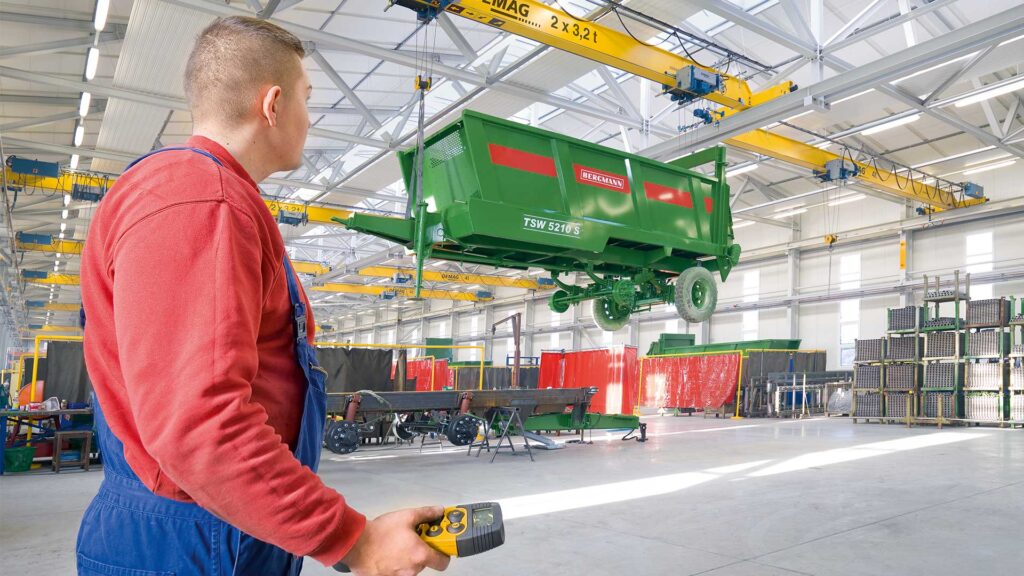
Due to the number of calls we receive for support with the DRC10D2 and D3, we developed a video series for the D2 on our YouTube channel. This series will take you through the startup and synching process for the DRC10D2 transmitter. Some of these videos are applicable to both systems, while others are only for the DRC10D2. When you reference these videos, read the description to clarify.
Differences Between the DRC10D2 and DRC10D3 Radio Systems
Determining which transmitter controls a crane is easy. Reference the decal located on the back of the transmitter or the receiver board. Both decals will have the DRC10 with the suffix D2 or D3. Operating frequency is the major difference between the 2 models. The DRC10D2 operates at a 900 MHz frequency and the DRC10D3 operates at a 2.4 GHz frequency. This means components cannot be interchanged between systems.
- Components of the DRC10D2
- 773 563 44 – Transmitter for DRC10D2
- 773 564 44 – Receiver for DRC10D2
- 773 569 44 – Antenna 900 MHz
- Components of the DRC10D3
- 773 791 44 – Transmitter for DRC10D3 stepless 2.4 Ghz
- 711 333 45 – Receiver for DRC10D3 2.4 Ghz
- 711 445 45 – Antenna for DRC10D3 2.4 Ghz
The DRC10D3 is the current new offering for new radio systems. D2 components are available to replace damaged D2 components. The transmitter is the most replaced component as it is handled the most. Since the receiver is in the electrical panel, it is not replaced as frequently as the transmitter. Remember, when you need to replace a component on either system, you cannot interchange the components of the D2 and D3 systems.
Replacing a DRC10D3 Transmitter – Search
When a new DRC10D3 radio system is purchased, the new receiver will readily show itself in a search performed by the new transmitter. Only pre-assigned receivers require a “release” before they show themselves in a search.
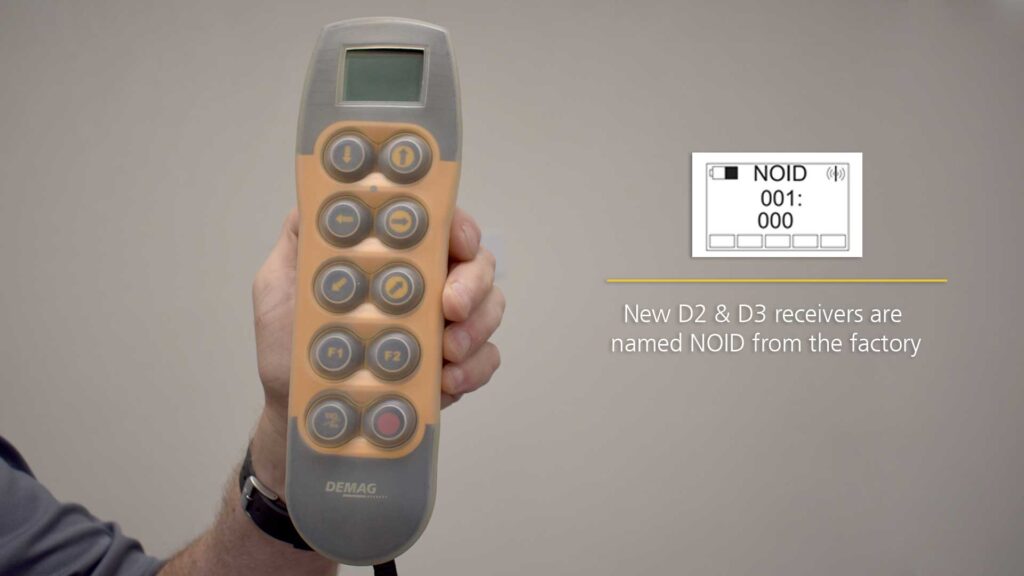
The new D3 receiver is originally named NOID. Once found and synched with the transmitter, only the horn and the e-stop control of mainline functions are available. A new name must be created to gain full functionality of all crane motions. Once found in the search, the NOID receiver must be changed to a four-character name which is most often set as the last 4 digits of the crane serial number.
Release for the DRC10D3 Transmitter
Both the D2 and D3 preassigned receivers require a release step when replacing the transmitter prior attempting a search. The release step releases the old receiver so you can find it in the search.
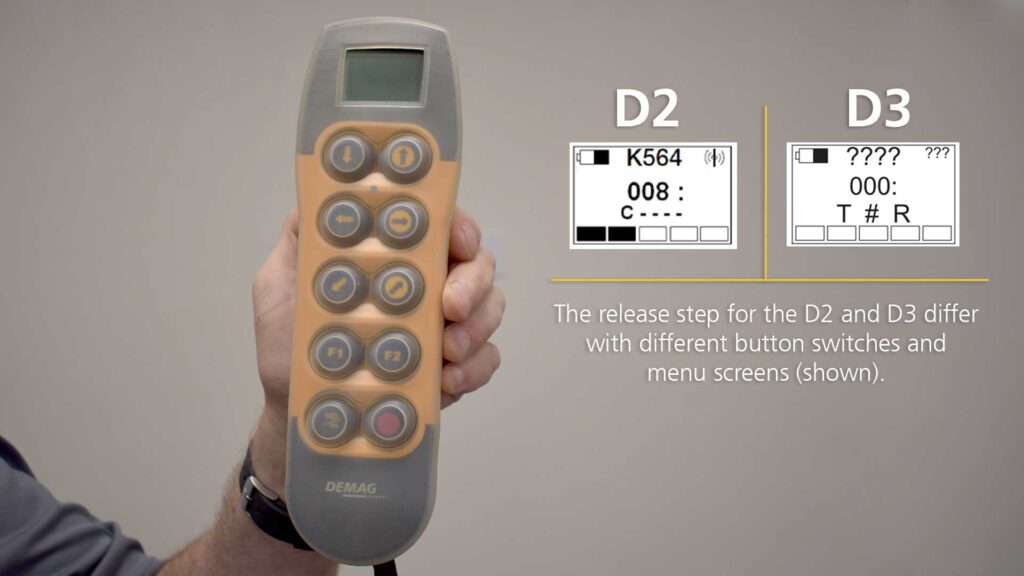
Button pushes are similar between the D2 and D3, but not the same. The D3 sequence requires Lift, Left, Left, Lift while the D2 requires Lift, Left, Lift while the Stop button is being held down. There are other key differences in the release step between the two transmitters. The D3 shows a different screen (referenced above in photo) than the D2 and the D3 requires an additional menu selection to navigate to the start screen of the release.
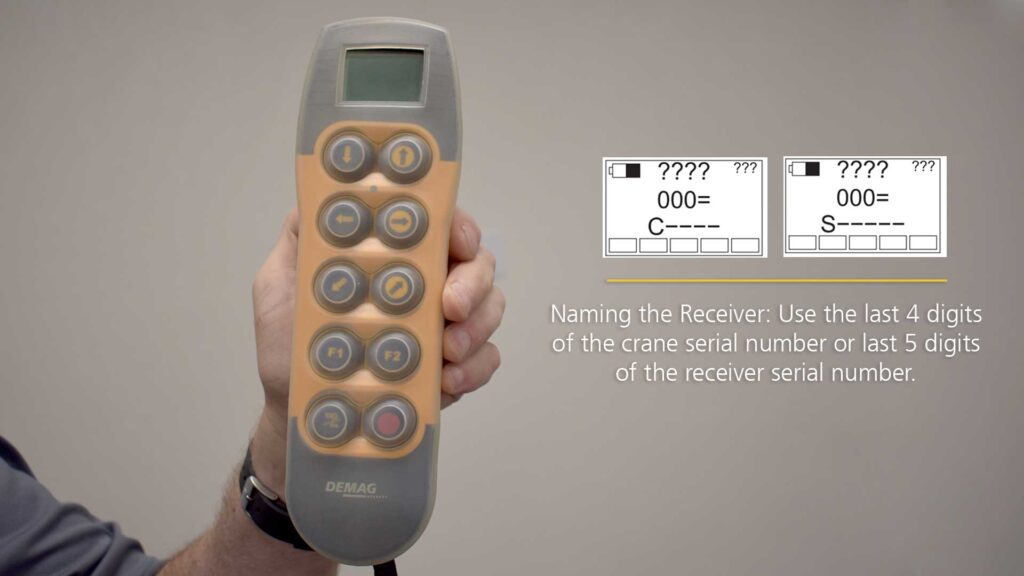
During the release process, you must enter the pre-existing name of the receiver. Usually the name is either the last 4 digits of the crane serial number or the last 5 digits of the receiver serial number. The receiver serial number can be found on the decal of the receiver board under the barcode on the decal. Use the 5 digit receiver number if the 4 digit code is unknown or lost.
The major difference in the release sequence between the D2 and D3 happens after the last digit of the name is entered. The D2 requires an extra F1 keystroke not required on the D3. It enters all the numbers as a set and is not required on the D3. This difference alone is the major reason we receive technical support calls. Reference our YouTube video for the release of the D2 transmitter.
As the release process is taking place, the screen will appear different on the D2 and D3 transmitters, as shown in our photo.
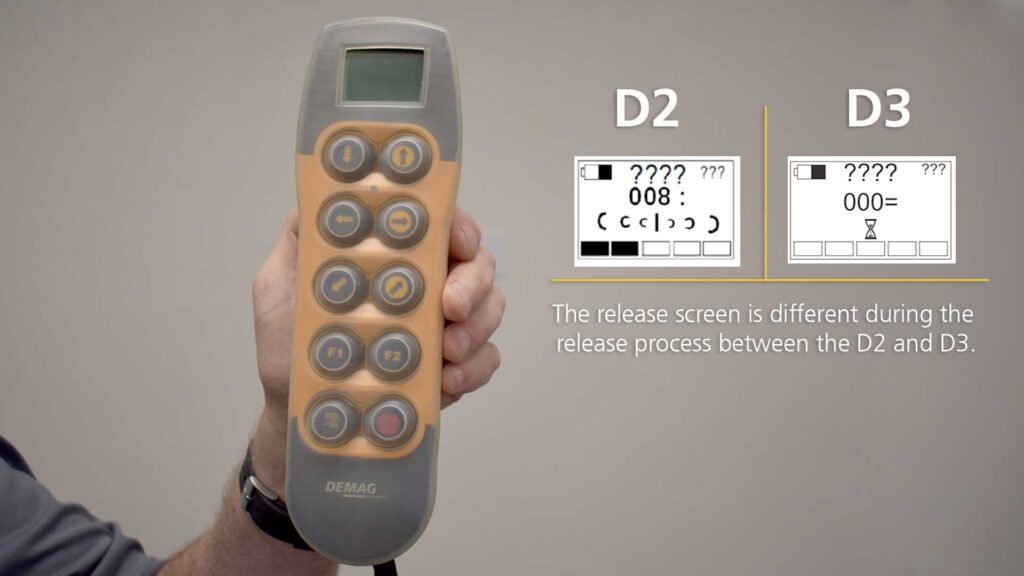
Completing the Process- Search, Synch, and Naming of the DRC10D3 Transmitter
The search, synch and naming functions are the same pushbutton programming steps comparing the D2 and D3 versions. Reference our YouTube video to learn more about this process.
Error Codes After Synching the DRC10D3
Once synched and operating the crane, the D3 may display internal error codes that the D2 could not. They are preceded by a “9” and range from 950-999. Reference the DRC10D3 manual for a listing of these error codes and their meaning for technicians use.
When installing a DRC10D3 system on a CANBUS crane with DR Pro hoists, error 950 is the most common code that appears. Reference our blog post for assistance with this error code.
Replacing a damaged transmitter is the most common component to replace on a DRC10D3 radio system. Whether you’re replacing the transmitter on the D3 system or upgrading a crane from the DRC10D2 system to the DRC10D3, note the differences in the process. The major difference of the D3 system is during the release step. The D3 does not require the extra F1 keystroke after inputting the name and the button push sequence is different than the D2. Keeping these differences in mind will help you be more efficient and effective for your customers.
Watch our 4-part video series on the Startup and Programming of the Demag DRC10D2 Radio Receiver.
- Understanding Wire Rope Lay for Your Next Wire Rope Hoist Repair or Inspection - December 21, 2023
- Diagnosing Additional Error Codes on Demag CANBUS Hoists and Cranes - March 28, 2023
- Maintenance and Service Tips for Demag KB and ZB Motors in Non-Crane Applications - February 7, 2023
